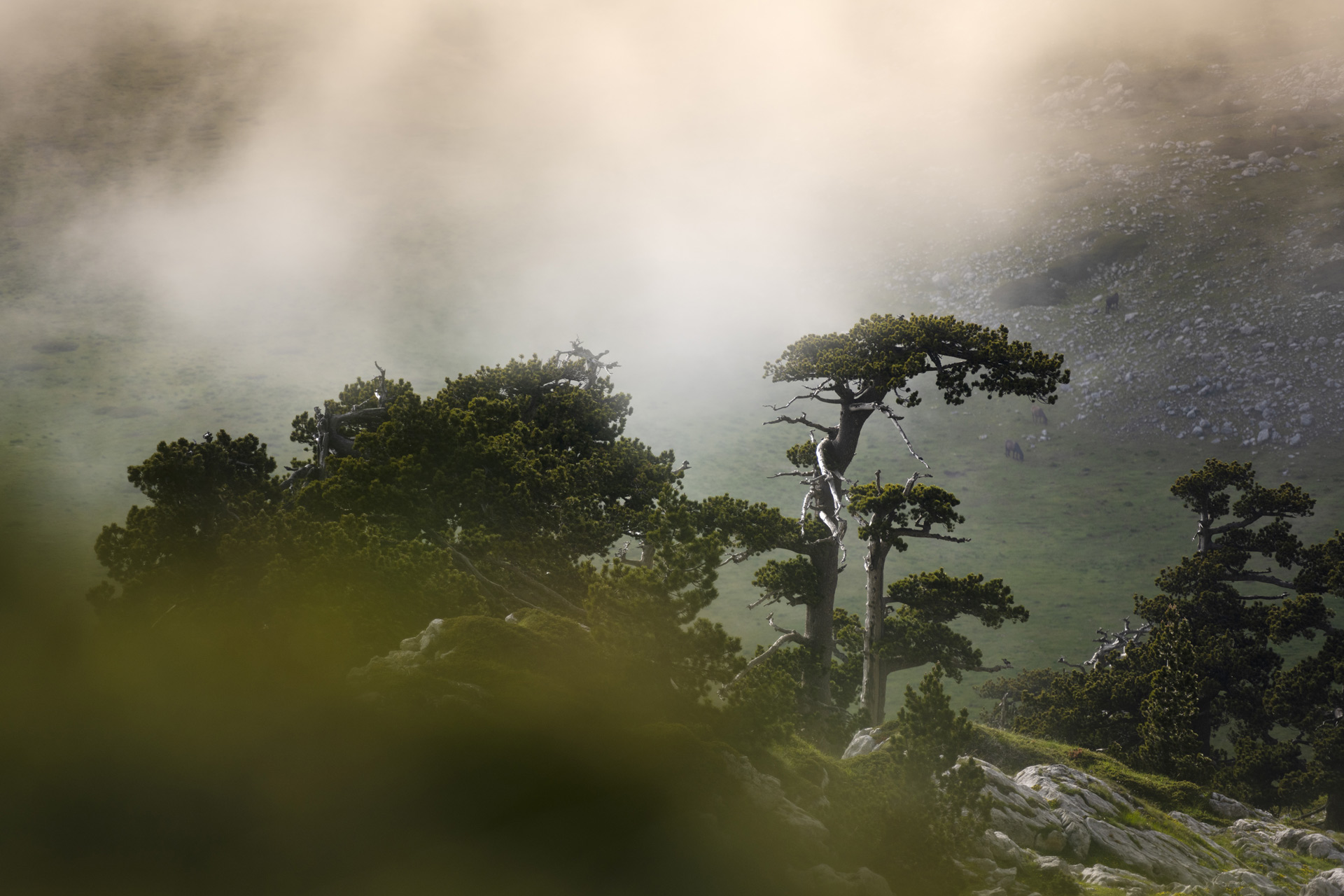This pine can generally be found only on mountains that are higher than 1000 m, where it replaces the beech, which prevails at lower altitudes, however there’s an exception: Canale Cavaiu (Orsomarso), 530 m.
It’s taken long and it was hard to identify and study the species. It was first discovered in 1826, when the Neapolitan botanist Michele Tenore gathered some branches on Mount Pollino, at 1850 m, however the samples were confused with other similar species. In 1863, Theodor von Heldreich found something similar on Mount Olympus, and in honor of that, later on Herman Christ dedicated Pollino’s trees to him. A year later F. Antoine found similar specimens on the peaks of the former Yugoslavia, and called the tree Pinus leucodermis. Until 1900, however, the pine found in what is now the Pollino National Park area still hadn’t been properly studied. In 1905 Biagio Longo, who came from Laino Borgo, a small town in the Pollino area, linked the specimens he found to the Pinus leucordermis Antoine (1864) and the Pinus heldreichii Christ (1863). It was Longo to call it, in Italian, ‘pino loricato’, due to the peculiar features of its cortex. In 1996, Dr. Silvano Avolio of the Istituto Sperimentale per la Selvicoltura di Cosenza came to the conclusion that there were two types of pino loricato: Pinus leucordermis, which could be found in Southern Italy, ex-Yugoslavia, Albania, Greece and Bulgaria, and was actually identified as the main type; and Pinus heldreichii, also known as Bosnian pine due to the large presence in the ex-Yugoslavian area as well as on Mount Olympus. The two pines don’t seem much different, that’s why they still are often identified as the same type.
The pino loricato present in the Pollino National Park area is a thick tree whose branches usually form some sort of flag to protect themselves from the whipping winds. This species is particularly able to adapt to cold and arid environments. In younger specimens the cortex is smooth, whereas in the older ones it’s split into trapezoidal plates covered in small sleek ones that remind of the Ancient Romans’ armor, hence the name ‘loricato’. The branches are characterized by the scars caused by the fallen needles, which, due to their peculiar rhomboidal shape, give branches some sort of ‘marbled’ effect, as if it were a snake’s skin. The main feature that characterizes the pino loricato, however, is its ability to adapt to the coldest environments on the highest peaks, where it took refuge in order not to succumb to the beech, which prevails at lower altitudes: this ability has gifted this pine with an elegant, fascinating silhouette that seems to remind of one of those classic statues, which is different from the one the specimens in other areas, protected by an easier climate, have. It’s exactly because of these features that the pino loricato, which resides on the highest peaks, is easy to spot even from afar, for instance from Piani di Pollino or Colle Gaudolino, or even only from the beautiful Belvedere di Malvento. The eldest, most charming specimens of pino loricato catch the eye, especially those wraithlike looking ones that, even though they’re technically dead, still remain standing, thanks to the cortex’s resin, which serves to protect the trees from decomposition. These peculiarities, together with the inebriating scent and the fact that it can resist to woodworms have made the pine’s wood perfect to build the chests and trunks that locals used to travel to America in search of a better fortune. Because this wood burns slowly and brightly, it was also used for the “deghe”, namely the torches lit during the feasts. The older the pines are, the more impervious the climate is, and that’s why usually it’s not cut to be used for fire, however that doesn’t mean that it’s never been submitted to damages and vile vandalism.
News from:
AA.VV., 1992 - "Calabria e Lucania riserva di verde nel Mediterraneo."- Carical. Libri Schiwller, Milano.
AA.VV., 1992-94 - "Pollino il mensile del Parco." - Periodico, supplemento al periodico Tribuna sud, Castrovillari: collezione completa.
Allegri E., 1954 – "Pino Loricato (Pinus Heldreichii Christ, var.leucodermis Ant.) sin.Pinus leucodermis Ant.." - Monti e Boschi, 5 (11-12): 531-534
Avolio S., 1996 – "Il Pino loricato." - Edizioni Prometeo, Castrovillari: pp 139.
Longhi G., 1956 – "Alcune osservazioni fitogeografiche e biologiche sul pino loricato (Pinus Heldreichii Grist., var. Leucodermis Ant.)." - L'Italia Forestale e Montana; Notiziario tecnico; Firenze XI(5): 227-228
Brogi Sante, 1960.- "Il pino loricato (Pinus Heldreichii Grist., var.Leucodermis Ant.) in Calabria e sua possibilità di diffusione." - L'Italia Forestale e Montana; Firenze XV(4): 157-163





